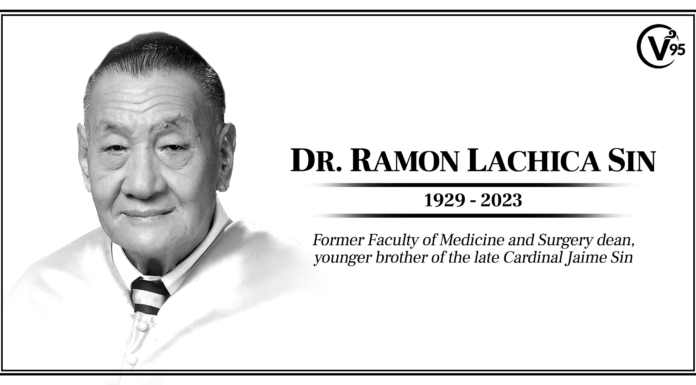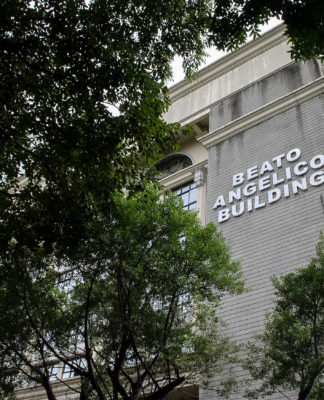DONNED in a black suit, Conservatory of Music Dean Raul Sunico stepped into the spotlight, then calmly took his position behind the piano. Listeners swooned as he synchronized his keystrokes with the playing of the Philippine Philharmonic Orchestra (PPO) to weave a magnificent concerto.
This was just one of the highlights in the Cultural Center of the Philippines’ (CCP) concert titled “The French Connection,” staged last April 17, which paid homage to French composers such as Darius Milhaud, Camille Saint-Saëns, Gabriel Fauré, and George Bizet.
“French music is what we call impressionism,” Sunico told the Varsitarian. Impressionism is a musical style that was popularized by Claude Debussy in the late 19th and early 20th century France. The style incites mood and triggers in the listener an ineffable sense of place and natural phenomena through the use of vague harmonies.
“I was exposed to French music already,” Sunico said. “In fact, we are more familiar with the music of other countries than our very own.”
Sunico is considered to be one of the country’s best pianists, earning international fame as a concert pianist, orchestral soloist, and composer-arranger of Philippine music. He earned his Master’s Degree in Music at the Juilliard School in New York.
The concert closed the CCP’s eight-month-long series of concerts called “Transymphonia,” a celebration of the PPO’s 25th year, which featured performances of classical pieces under the direction of foreign conductors.
One of them was multi-awarded French conductor Michael Cousteau, who piloted the PPO from the joyful introductory tune of Milhaud’s Guardians, down to the last note of Bizet’s Farandole.
“I think this is a really great collaboration between the Philippines and France,” said Cousteau. “The concert showed us what our music had in common and promoted the diversity between countries and races.”
“It’s one way of trying to make the world as one because music has always been a melting pot of cultures,” Sunico agreed. “Composers combine different cultures by using themes or situating their works in a foreign setting.”
No misses
Each characteristic of French music was thoroughly pulled off by the PPO. Festive were the loud sounds of the aerophones, mixed with the shrill tunes of the violin family, capped off by the heart-thumping beat of the percussions. Overall, the concerto succeeded in creating a complex of moods and melody
For example, in the concert’s overture, Milhaud’s Suite Provençale, spectators were welcomed to the theater by the vigorous tone of the orchestra, which slowed down in few instances to shed light on the poignancies in French harmonies. Moods of merriment and depression were placed on an even scale by the alternating fast-slow rhythm.
The same can be said of the orchestra’s rendition of Saint-Saëns’ Piano Concerto No. 5 in F Major. Dubbed The Egyptian, this portion was mainly played by Sunico, where his swift tapping of the piano keys was supported by the orchestra’s upbeat pace.
The concert’s mood changed from fast to slow after the interval, as the suite from Fauré’s Pelléas et Mélisande and Bizet’s L’Arlésienne toned down the high spirits molded by the orchestra’s first two festive samplings.
In the last part of the concert, the orchestra gave a tremendous sendoff as every instrument played festive notes again, as if risen from a long slumber. The orchestra’s bravura paid off well as the audience applauded and shouted for an encore. James C. Talon
















